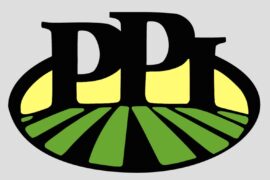The United States Department of Agriculture (USDA) has deregulated the Russet Burbank variety of the second generation of Innate™ potatoes genetically engineered by J.R. Simplot Co. The Boise, Idaho-headquartered agribusiness firm is now looking forward to completion of Environmental Protection Agency (EPA) registration and Food and Drug Administration (FDA) consultation before the tubers can be introduced into the marketplace.
According to Simplot, which ranks among the world’s largest producers of frozen french fries, the spuds contain four beneficial traits of relevance to potato growers, processors and consumers: reduced bruising and black spots; lower levels of naturally-occurring asparagine, resulting in less acrylamide when cooked at high temperatures; resistance to late blight pathogens; and enhanced cold storage capability. These traits were achieved by adapting only genes from wild and cultivated potatoes.
“For historical and current agriculture reasons, this is an important milestone,” said Haven Baker, Simplot’s vice president and general manager of plant sciences. “The Irish potato famine did change a lot of Western history. Even today, 160 years later, late blight is a $5 billion problem for the global potato industry.”
 Comparison of peeled Innate™ Russet Burbank (foreground) to conventional peeled Russet Burbank after 30 minutes shows that it stays whiter longer after the skin has been removed.Early research shows that Innate second generation potatoes will further contribute to lessening waste associated with bruise, blight and storage losses by reducing waste at multiple stages of the value chain – including in-field, during storage, processing, and in foodservice channels. That research suggests that less land, water and pesticide applications will be required to produce these potatoes.
Comparison of peeled Innate™ Russet Burbank (foreground) to conventional peeled Russet Burbank after 30 minutes shows that it stays whiter longer after the skin has been removed.Early research shows that Innate second generation potatoes will further contribute to lessening waste associated with bruise, blight and storage losses by reducing waste at multiple stages of the value chain – including in-field, during storage, processing, and in foodservice channels. That research suggests that less land, water and pesticide applications will be required to produce these potatoes.
Academics consulted by Simplot estimate that the Innate late blight resistance trait, regulated by the EPA, can result in a 25-45% reduction in fungicide applications annually to control late blight. Lower asparagine means that accumulation levels of acrylamide can be reduced by up to 90% or more when these potatoes are cooked at very high temperatures. In addition, lowered reducing sugars enable cold storage at 38°F for more than six months without the build-up of sugars, which improves quality.
Meanwhile, the company’s first generation of Innate potatoes, approved earlier this year as safe and nutritious by the FDA, has yet to be accepted as raw material for the manufacture of french fries menued by fast food chains and other foodservice operators. However, the spuds are being sold in a number of grocery stores and other retail outlets in the US Midwest and Southeast, where they are marketed as White Russets.
“Our focus is on the fresh market for the coming year,” said Baker. “We think the benefits are clear. We’ve got customers and it’s a place that we’re excited to be. To some degree I think we need to prove that consumers are willing to buy White Russets, and they know what they are and that they see the benefits. Then I think the other parts of the industry will come.”
Food and Drug Administration approval for first generation came after the USDA’s deregulation of Innate potatoes. The FDA’s safety consultation was voluntarily requested by Simplot as a further evaluation of the Innate technology, which has been in development for more than a decade. These federal clearances involved years of technical review and a thorough public comment period that drew the support of 14 leading potato research universities in the United States and Europe.
 This potato field in Pennsylvania was naturally infected with late blight. The only surviving plants are Innate™ generation two.“The Innate potato is the most promising advancement in the potato industry I’ve seen in my 30 years studying agriculture,” said David S. Douches, Ph.D. at the Department of Crop and Soil Sciences at Michigan State University, who has implemented field trials of Innate. “This potato delivers significant health and sustainability benefits, all by using its own DNA. Such advancements haven’t been possible using traditional breeding.”
This potato field in Pennsylvania was naturally infected with late blight. The only surviving plants are Innate™ generation two.“The Innate potato is the most promising advancement in the potato industry I’ve seen in my 30 years studying agriculture,” said David S. Douches, Ph.D. at the Department of Crop and Soil Sciences at Michigan State University, who has implemented field trials of Innate. “This potato delivers significant health and sustainability benefits, all by using its own DNA. Such advancements haven’t been possible using traditional breeding.”
Simplot used the techniques of modern biotechnology to accelerate the traditional breeding process and introduce new traits by triggering the potato’s own RNA interference (RNAi) pathway. RNAi is a natural cellular process commonly used by plants and animals to modulate expression of certain genes, and has been used effectively in multiple commercial crops sold over the last decade.
“Unlike traditional methods of breeding, which introduce random mutations associated with dozens of genes, the method used to develop Innate potatoes is precise,” said Douches.





